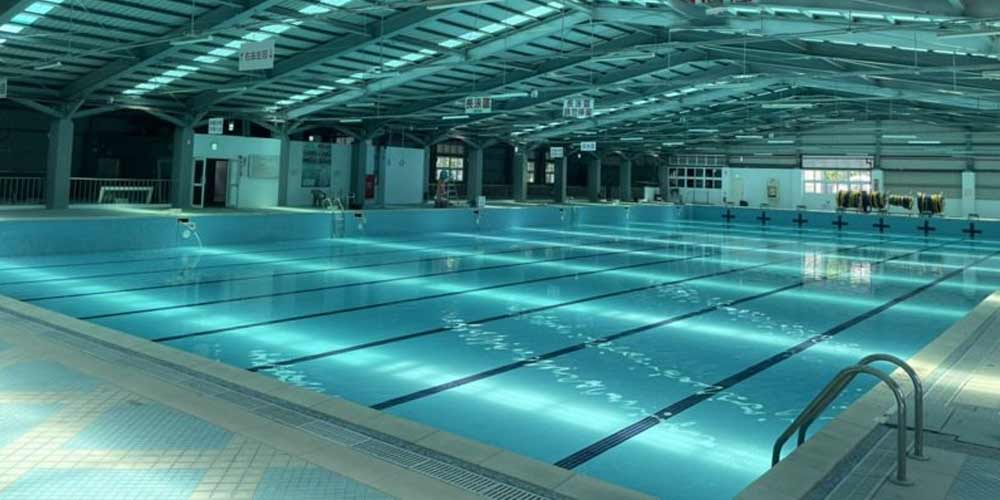Më e zakonshmeDezinfektantNë pishina përdoret klori. Klori është një përbërës kimik i përdorur gjerësisht për të dezinfektuar ujin dhe për të ruajtur një mjedis të sigurt dhe higjienik për not. Efikasiteti i tij në vrasjen e baktereve, viruseve dhe mikroorganizmave të tjerë e bën atë zgjedhjen e preferuar për higjienën e pishinave në të gjithë botën.
Klori vepron duke çliruar klor të lirë në ujë, i cili më pas reagon me ndotësit e dëmshëm dhe i neutralizon. Ky proces eliminon në mënyrë efektive bakteret, algat dhe patogjenët e tjerë, duke parandaluar përhapjen e sëmundjeve që transmetohen nga uji dhe duke siguruar që pishina të mbetet e pastër dhe e sigurt për notarët.
Ekzistojnë forma të ndryshme të klorit që përdoren në higjienën e pishinave, duke përfshirë klorin e lëngshëm, tabletat, granulat dhe pluhurin e klorit. Secila formë ka avantazhet e veta dhe zbatohet bazuar në faktorë të tillë si madhësia e pishinës, kimia e ujit dhe preferencat e operatorëve të pishinës.
Tableta klori(ose pluhur\granula) zakonisht përbëhen nga TCCA ose NADCC dhe janë të lehta për t’u përdorur (TCCA tretet më ngadalë dhe NADCC tretet më shpejt). TCCA mund të vendoset në një dozues ose notues për përdorim, ndërsa NADCC mund të vendoset direkt në pishinë ose të tretet në një kovë dhe të derdhet direkt në pishinë, duke lëshuar gradualisht klorin në ujin e pishinës me kalimin e kohës. Kjo metodë është e popullarizuar në mesin e pronarëve të pishinave që kërkojnë një zgjidhje sanitare me mirëmbajtje të ulët.
Klori i lëngshëm, shpesh në formën e hipokloritit të natriumit, është një opsion më miqësor për përdoruesit. Përdoret zakonisht në pishina banimi dhe ambiente më të vogla komerciale. Klori i lëngshëm është i lehtë për t’u trajtuar dhe ruajtur, duke e bërë atë një zgjedhje të njohur për pronarët e pishinave që preferojnë një tretësirë dezinfektuese të përshtatshme dhe efektive. Megjithatë, efektiviteti i dezinfektimit të klorit të lëngshëm është i shkurtër dhe ka një ndikim të madh në vlerën e pH-it të cilësisë së ujit. Dhe gjithashtu përmban hekur, i cili do të ndikojë në cilësinë e ujit. Nëse jeni mësuar me klorin e lëngshëm, mund të merrni në konsideratë përdorimin e pluhurit zbardhues (hipoklorit kalciumi) në vend të tij.
Përveç kësaj: SWG është një lloj dezinfektimi me klor, por disavantazhi është se pajisjet janë mjaft të shtrenjta dhe investimi i vetëm është relativisht i lartë. Meqenëse në pishinë shtohet kripë, jo të gjithë janë mësuar me erën e ujit të kripur. Kështu që do të ketë më pak përdorim të përditshëm.
Përveç përdorimit të klorit si dezinfektant, disa pronarë pishinash mund të marrin në konsideratë metoda të tjera dezinfektimi, siç janë sistemet e ujit të kripur dhe dezinfektimi me UV (ultravjollcë). Megjithatë, UV nuk është një metodë dezinfektimi pishinash e miratuar nga EPA, efikasiteti i saj i dezinfektimit është i dyshimtë dhe nuk mund të prodhojë një efekt dezinfektimi të qëndrueshëm në pishinë.
Është thelbësore që operatorët e pishinave të testojnë dhe të mirëmbajnë rregullisht nivelet e klorit brenda diapazonit të rekomanduar për të siguruar higjienë efektive pa shkaktuar acarim te notarët. Qarkullimi i duhur i ujit, filtrimi dhe kontrolli i pH-it gjithashtu kontribuojnë në një mjedis të mirëmbajtur të pishinës.
Si përfundim, klori mbetet dezinfektuesi më i zakonshëm dhe i pranuar gjerësisht për pishinat, duke ofruar një metodë të besueshme dhe efektive të dezinfektimit të ujit. Megjithatë, përparimet në teknologji vazhdojnë të prezantojnë mundësi alternative të dezinfektimit që i përshtaten preferencave dhe konsideratave të ndryshme mjedisore.
Koha e postimit: 11 Mars 2024


